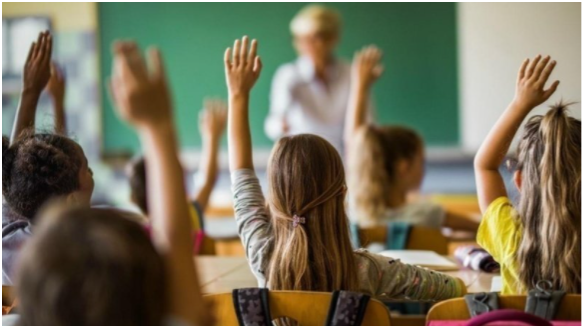The Dangers of Face to Face learning: Why Cobb County should remain virtual

As students return to the classroom, social distancing measures, mandatory mask wearing and the pressures of keeping oneself safe, remains an issue as student become infected with the virus. The concept of face to face learning as seen with cherokee and Paulding county shows the dangers of COVID with hundreds of students catching the virus. Until a vaccine comes into play, virtual learning should remain the only option, with social interaction done safely to prevent further spread.
September 18, 2020
As the COVID cases rise and death rates climb, the world continuously takes precautionary measures towards the safety of others to prevent further spread. From mandatory masks to daily COVID testing, the concept of face to face learning within public schools slowly becomes a reality as schools in Cherokee, Paulding, and other parts of central Georgia reopen their schools with the hope of normalcy returning within their schools. The only issues however rely on jeopardizing students’ health with the lenient rules on masks and other safety precautions.
“Reopening schools endangers students because of how dangerous and easily contractible the virus is. One student could test positive and spread over the entire student body, quickly over time. Students and parents should consider this and how the students could easily be at risk,” junior Tiffani Elliott
One unsafe factor of face to face learning comes with the lack of social distancing and mandatory mask wearing, putting students and parents on the fence. With middle schools and high schools, such as NC containing thousands of students, social distancing standards immediately fly thrown out the window with crowds of students flooding the halls. Students who fail to meet CDC guidelines of wearing a mask place an additional risk in terms of their health when in a building filled to the brim with students.
An example of these COVID violations surfaced last month when a large group of students and teachers at Cherokee High School were seen gallivanting through the halls closely together, without masks. After only three weeks of reopening, 59 students tested positive for the virus with a resulting mandated two-week quarantine put into place.
“Masks should be mandatory because of how high the potential risk of getting Corona is. It’ll not only prevent it from spreading but it will make it safer to attend school, work, etc,” Elliott said.
In addition, social distancing within the classroom prevents students from interacting in terms of working in group projects, presenting and dialoguing with fellow students about assignments and instruction. The idea of students sitting at least six feet apart prevents necessary dialogue in terms of group projects, peer support, and general social interactions.
Those in favor, however, question if remote learning and increased social isolation constitutes a mentally safe option. According to a recent study by Science Magazine, “Over long periods of time, social isolation can increase the risk of a variety of health problems, including heart disease, depression, dementia, and even death.” Although these claims detail the severe consequences of social isolation, interacting indoors still poses a threat.
As the virus continues to spread, students and parents continue to debate over returning to school, while remaining in quarantine. From a lack of social distancing to deprivation of normal physical interaction needed to learn, Cobb reopening their schools would provide numerous challenges, risking the safety of students and parents. Until conditions mend, students and parents must continue to keep themselves safe while still remaining hopeful for the future in education and life as a whole.



